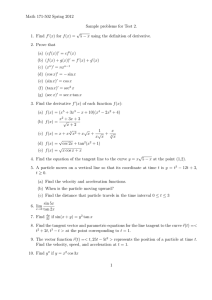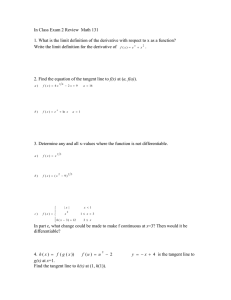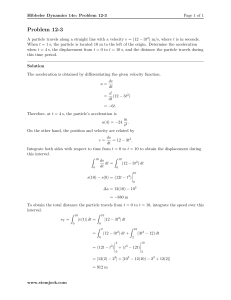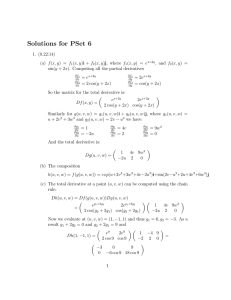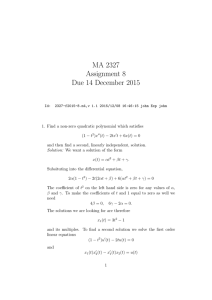Fall 2014 – MATH 151, Sections 549-551 Quiz #4 Solutions
advertisement
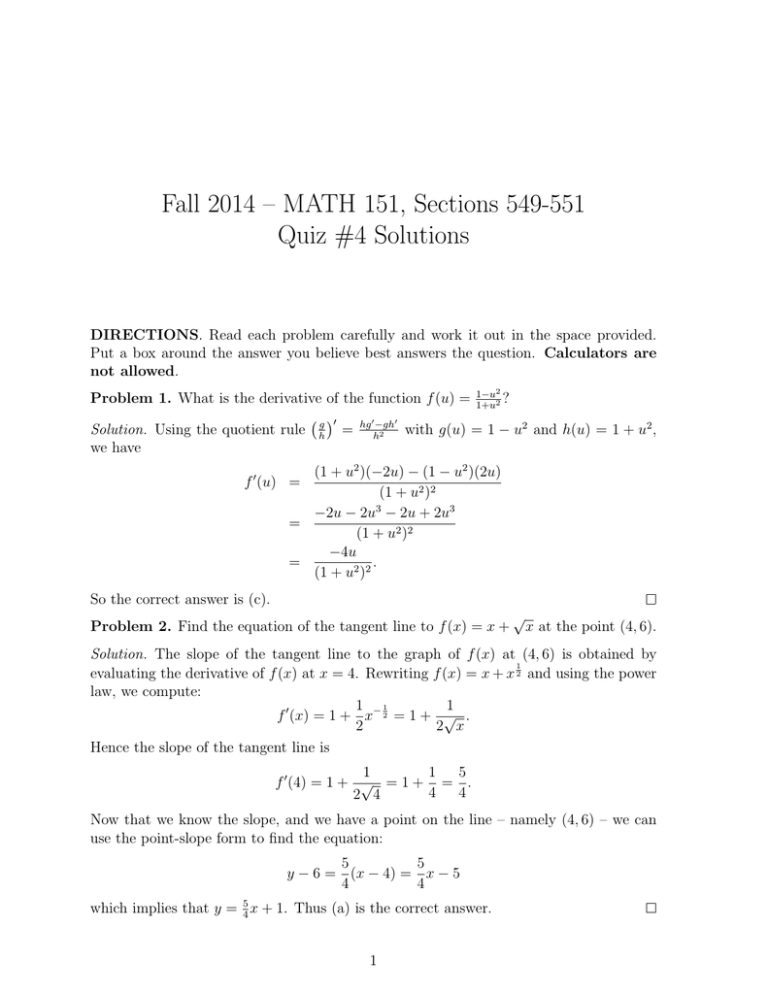
Fall 2014 – MATH 151, Sections 549-551 Quiz #4 Solutions DIRECTIONS. Read each problem carefully and work it out in the space provided. Put a box around the answer you believe best answers the question. Calculators are not allowed. 2 ? Problem 1. What is the derivative of the function f (u) = 1−u 1+u2 0 0 0 with g(u) = 1 − u2 and h(u) = 1 + u2 , Solution. Using the quotient rule hg = hg h−gh 2 we have (1 + u2 )(−2u) − (1 − u2 )(2u) f (u) = (1 + u2 )2 −2u − 2u3 − 2u + 2u3 = (1 + u2 )2 −4u = . (1 + u2 )2 0 So the correct answer is (c). Problem 2. Find the equation of the tangent line to f (x) = x + √ x at the point (4, 6). Solution. The slope of the tangent line to the graph of f (x) at (4, 6) is obtained by 1 evaluating the derivative of f (x) at x = 4. Rewriting f (x) = x + x 2 and using the power law, we compute: 1 1 1 f 0 (x) = 1 + x− 2 = 1 + √ . 2 2 x Hence the slope of the tangent line is 1 1 5 f 0 (4) = 1 + √ = 1 + = . 4 4 2 4 Now that we know the slope, and we have a point on the line – namely (4, 6) – we can use the point-slope form to find the equation: 5 5 y − 6 = (x − 4) = x − 5 4 4 which implies that y = 54 x + 1. Thus (a) is the correct answer. 1 Math 151 Fall 2014 Quiz #4 Solutions 2 Problem 3. The position function of a particle is given by s = t3 − 4.5t2 − 7t, t ≥ 0, with s(t) given in meters and t in seconds. When does the particle reach a velocity of 5 m/s? Solution. The velocity function is the derivative of the position function. That is, if v(t) denotes the velocity of the particle at time t, we have v(t) = s0 (t) = 3t2 − 9t − 7. We are asked to find the time t for which v(t) = 5 m/s. That is, we seek the value(s) for t that satisfy 3t2 − 9t − 7 = 5, or subtracting 5 from both sides, 0 = 3t2 − 9t − 12 = (3t + 3)(t − 4). We now see that t = −1 and t = 4 satisfy the equation. Since in the statment of the problem, we are told t ≥ 0, the correct answer is t = 4, which is choice (b). Problem 4. What is dy dx of y = cos x − 2 tan x? Solution. By the sum rule, we have d d dy = cos x − 2 tan x. dx dx dx Now, d dx cos x = − sin x and d dx tan x = sec2 x. Thus, dy = − sin x − sec2 x. dx So the correct answer is (a).


